Plants for front yards: 16 top choices to welcome you home
These beautiful and easy-care plants for front yards are bound to make a good first impression


Choosing the best possible plants for front yards is important for greeting guests in style and setting the right tone for your home.
After all, the front garden is a valuable space – but one that is often underused. For example, one in five UK front gardens is almost entirely paved. Such paving requires planning permission in many counties, since it can exacerbate flooding. A simple scheme of low-maintenance planting is a better option and can be a delight all year.
One of the best plant groups for a front garden is, of course, evergreens. Unlike the main garden, which is predominantly used in summer, the front garden is seen all year. The front garden is also a great place for plants that perform during the colder months, allowing the main rear garden to be dedicated to plants that flower when we’re outdoors in summer. Hollies that produce red winter berries, witch hazels that scent the cold air, or cherries that have spring blossom and fiery leaves in fall are all good choices.
But, if you like to have blooms as part of your front garden ideas during summer, opt for low-maintenance plants that flower over a long period. A mini gravel garden is a great idea, requiring no weeding and catering to drought-tolerant plants (such as lavender and California poppies). In a shadier front garden, hydrangeas complement green and silver ferns and a medley of evergreens with different leaf colors and shapes. Choose tough plants and a mulch that prevents the need to water and weed, and your front garden will be a fuss-free joy for years.
16 perfect plants for front yards
Incorporate these beauties as part of the landscaping ideas for the front of your house and the curb appeal of your plot will get a guaranteed boost.
1. Hydrangea quercifolia 'Snow Queen'
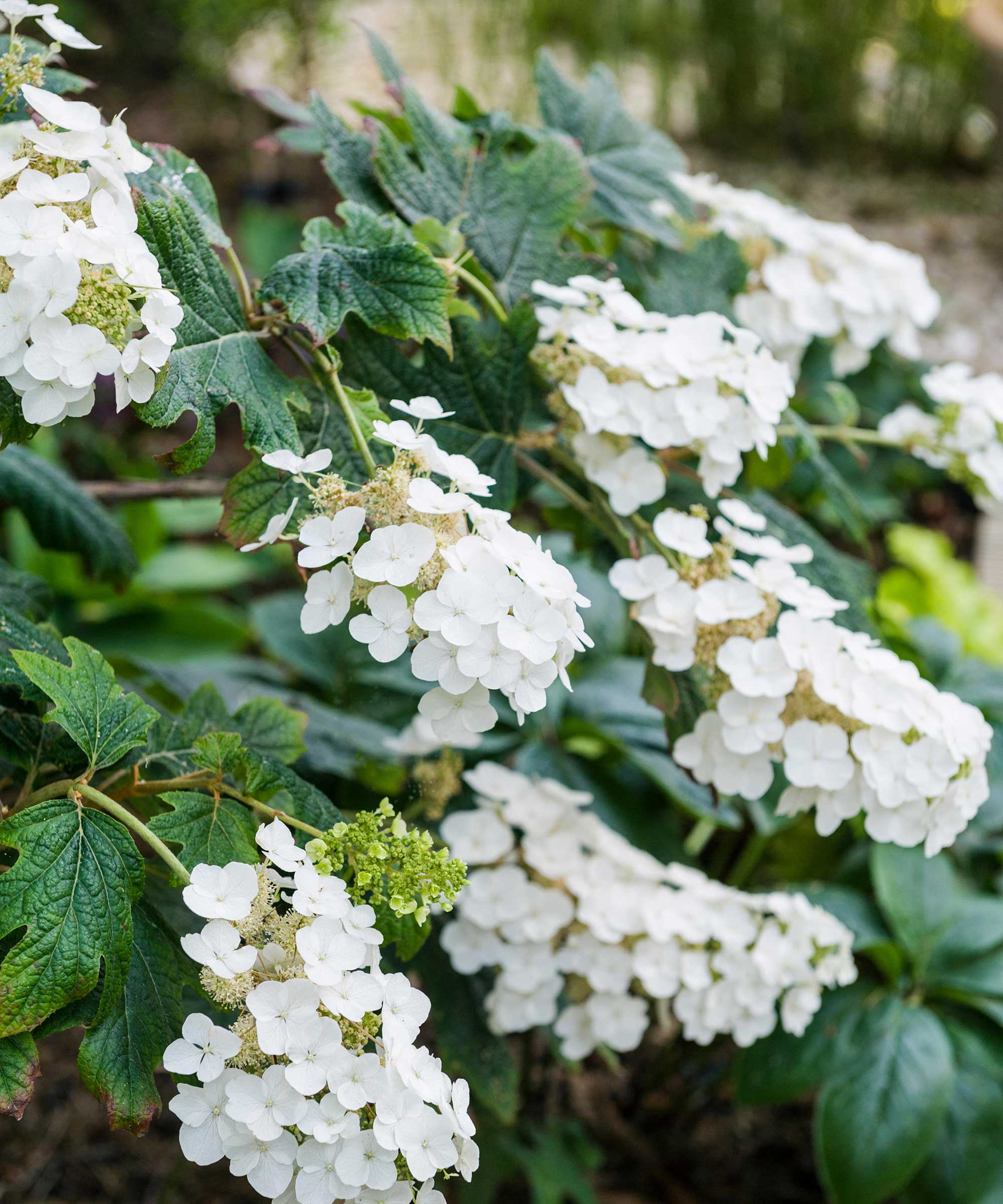
- Best for: Long-lasting flowers
- Height: 6ft (1.8m)
- Spread: 6ft (1.8m)
- Hardiness: USDA 5-9 (UK H5)
'Hydrangeas add interest to a front garden, while being low maintenance,' says garden designer Ethan McGory. 'The blooms last a long time, and there's a variety for most light levels.'
For example, try 'Snow Queen' in semi-shade and 'Little Quick Fire' in sun, he suggests. 'The large blooms and leaves pair well with fine-leaved plants, such as buxus and ferns.'
2. Choisya ternata
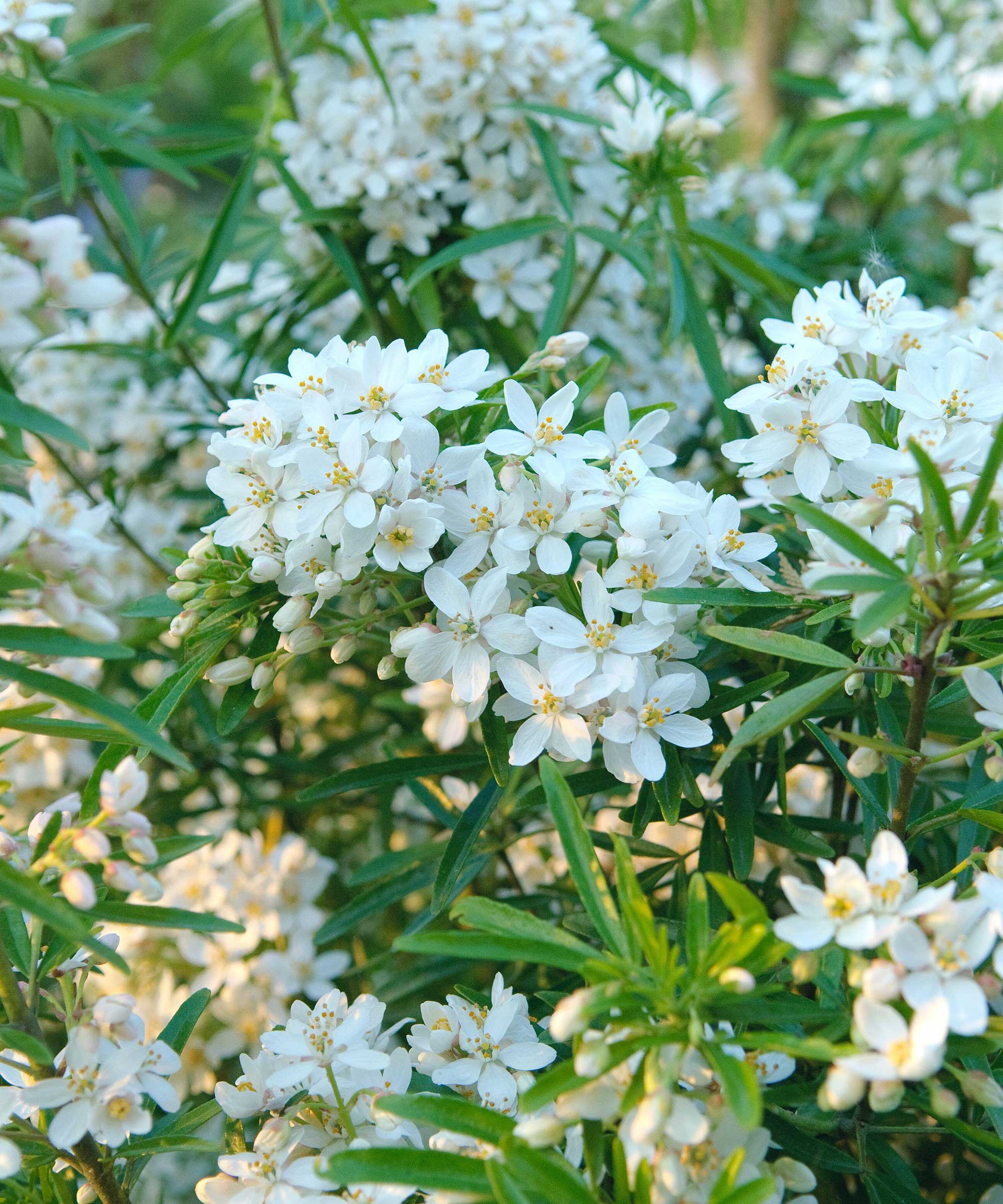
- Best for: Low maintenance
- Height: 7ft (2.1m)
- Spread: 7ft (2.1m)
- Hardiness: USDA 7-10 (UK H4)
Mexican orange blossom is an easy, low-maintenance shrub with glossy evergreen leaves and scented white flowers for months. The variety 'Sundance' has golden foliage, but doesn't flower as well.
Grow with Euphorbia mellifera in well-drained soil in full sun. Choisya is tolerant of urban pollution, but its leaves are damaged by cold wind, so provide plenty of shelter if you include this in your front yard landscaping plans.
3. Salvia rosmarinus 'Sissinghurst Blue'
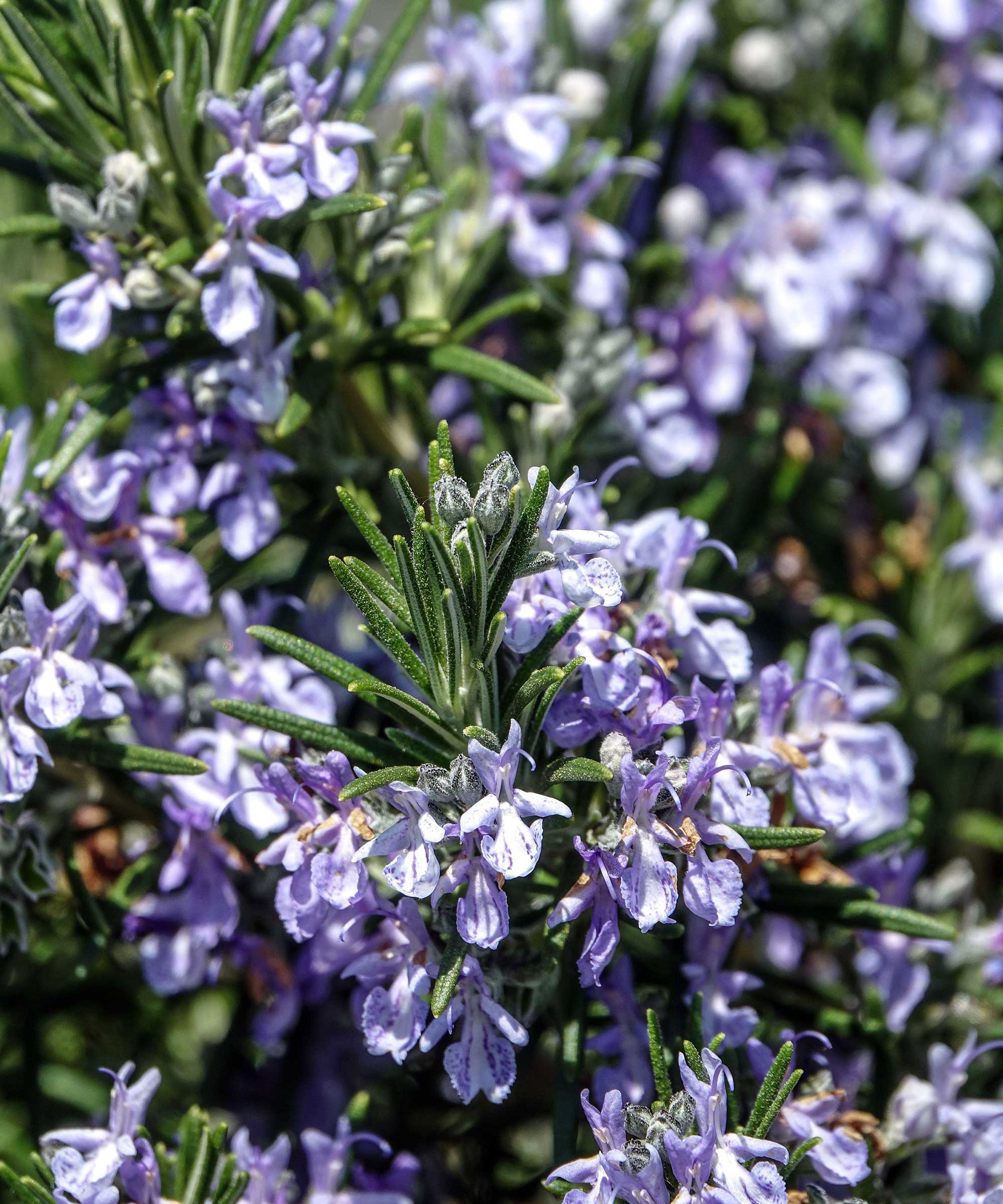
- Best for: Bees
- Height: 30in (80cm)
- Spread: 30in (80cm)
- Hardiness: USDA 8-10 (UK H4)
This fantastic rosemary provides a mass of evergreen foliage that fills the air with reviving scent on warm days and can be used in cooking.
It's a good bee-friendly plant, too – in early summer, they will flock to the blue blooms.
Grow with cistus in poor, well-drained soil in full sun or clip into a low hedge by shearing after flowering.
4. Festuca glauca 'Intense Blue'
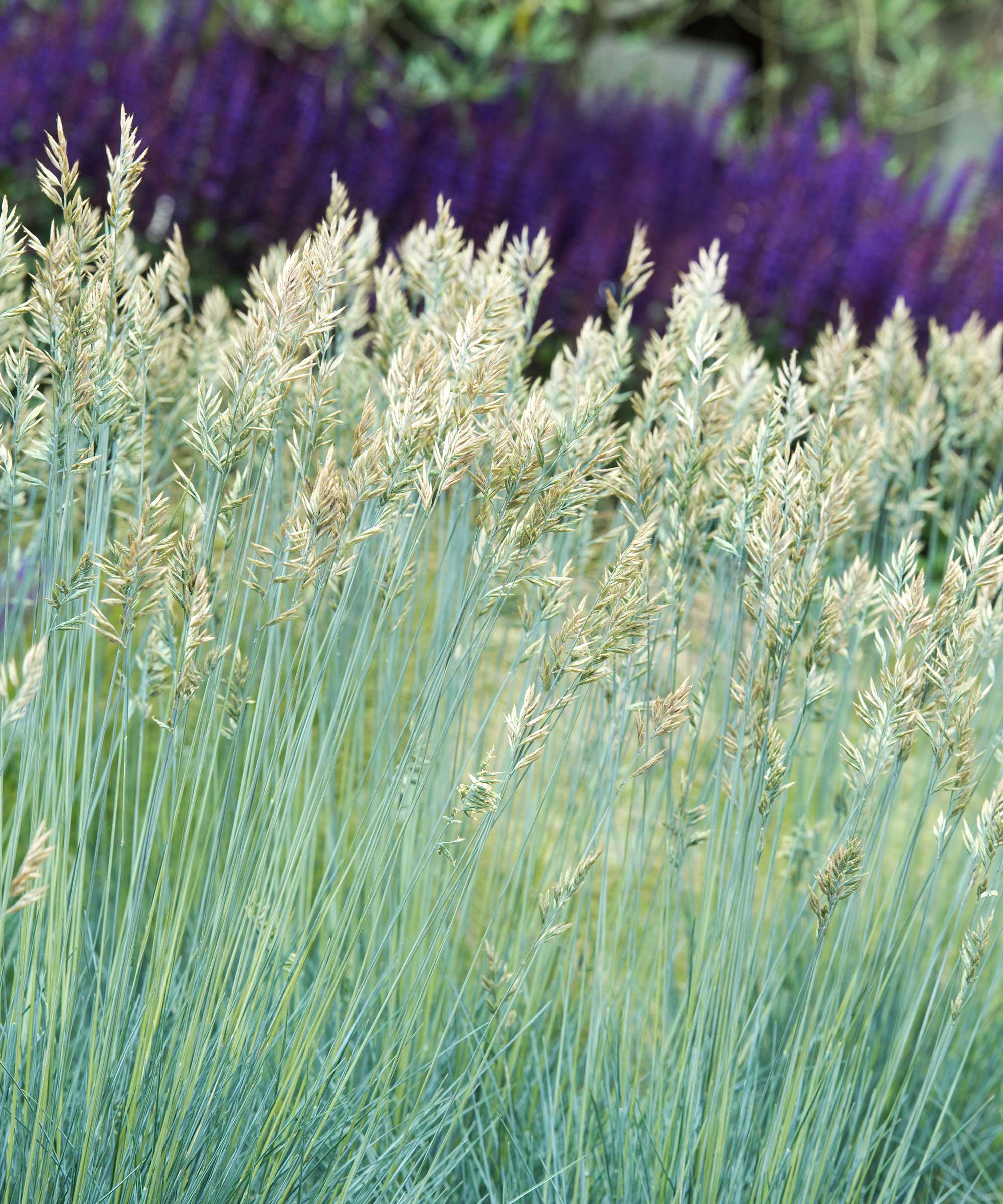
- Best for: Leaf color
- Height: 12in (30cm)
- Spread: 12in (30cm)
- Hardiness: USDA 4-9 (UK H5)
Ornamental grasses are ideal plants for front gardens as they provide instant structure.
'Colorful grasses such as blue festuca and lime-gold carex produce a less fussy look while being low maintenance,' says landscape designer Nathan Tuno, who works at Roots Landscape Inc. 'They also provide juxtaposition to boxwoods (Buxus).'
This beautiful polar-blue fescue is best in well-drained soil in full sun.
5. Acer palmatum 'Orange Dream'
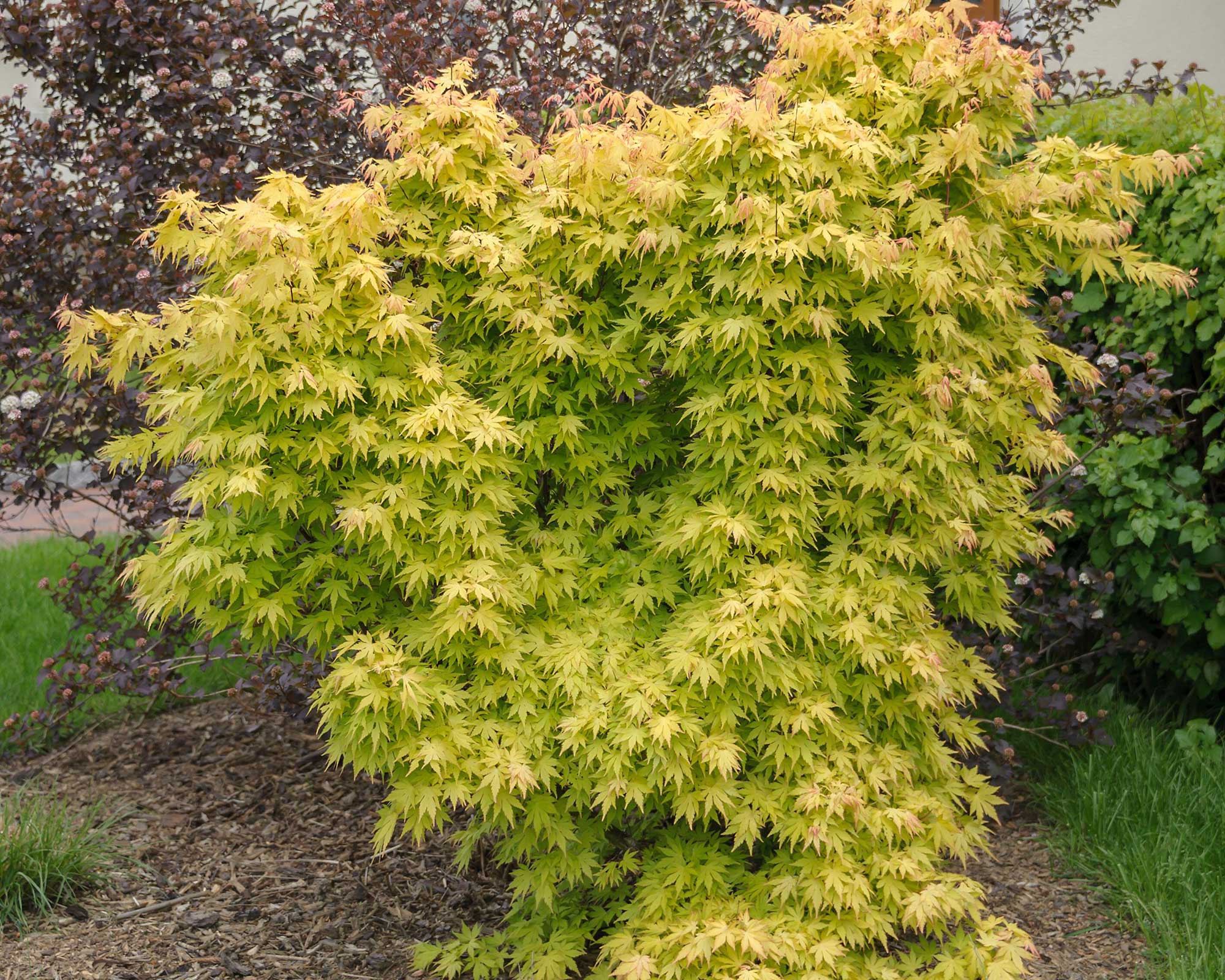
- Best for: Fall color
- Height: 10ft (3m)
- Spread: 10ft (3m)
- Hardiness: USDA 5-9 (UK H6)
If you're on the lookout for a tree for your front yard, this slow-growing Japanese maple makes a wonderful option. It has a good, open, branching shape with leaves that emerge yellow and then mature to green, before taking on lovely golden and orange tints before dropping in the fall.
Grow it in well-drained, retentive neutral to acid soil in sheltered semi-shade for best results.
6. Miscanthus sinensis 'Morning Light'
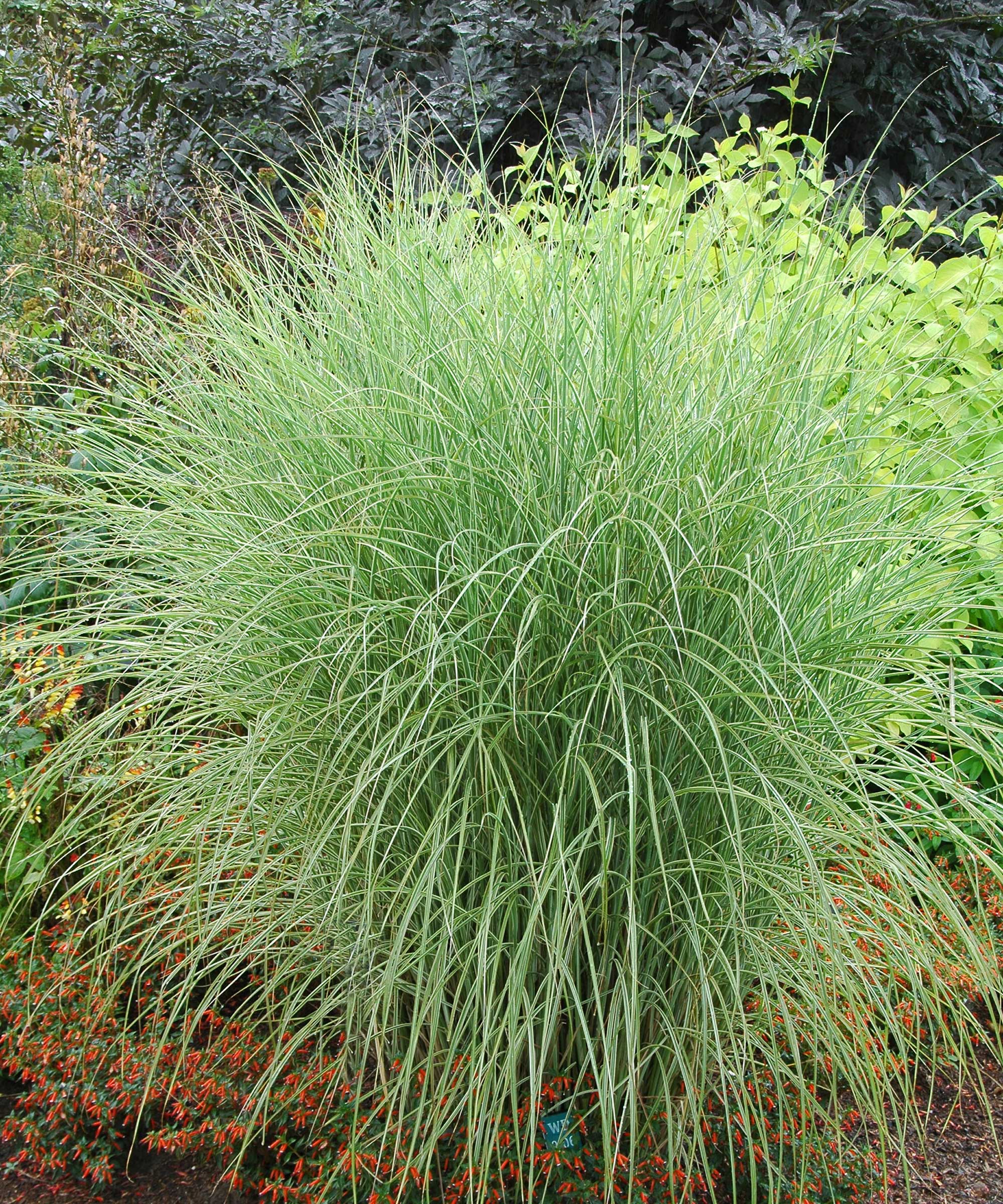
- Best for: Sound
- Height: 4ft (1.2m)
- Spread: 3ft (90cm)
- Hardiness: USDA 5-9 (UK H6)
Inject light, movement, and sound into the front garden with this gorgeous green and cream deciduous type of ornamental grass. The arching slender leaves rustle on the breeze and provide pale color for months.
Pair with agastache and veronicastrum in very well-drained soil in full sun; it can also be grown in generous well-drained containers.
7. Geranium 'Anne Thomson'
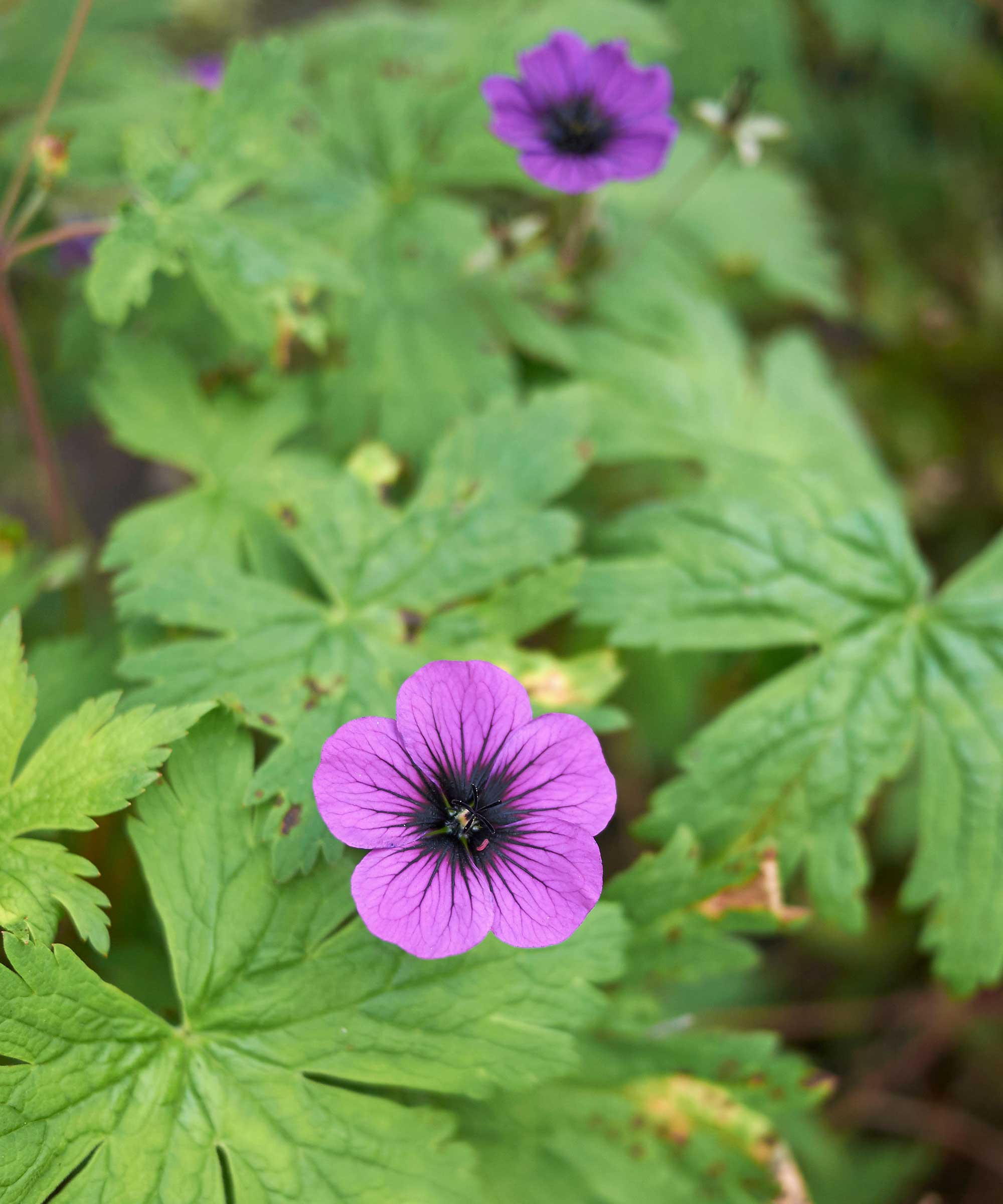
- Best for: Flower power
- Height: 1.5ft (45cm)
- Spread: 3ft (90cm)
- Hardiness: USDA 5-8 (UK H7)
This stalwart cranesbill flowers for months: sometimes from mid-summer into late fall. It forms a neat mound of foliage that emerges golden lime and matures to green, followed by cheering black-eyed magenta flowers.
Grow this spreading perennial with purple salvias in well-drained soil in sheltered sun or semi-shade and cut back after flowering. A lovely choice if you're a fan of cottage garden ideas.
8. Prunus 'The Bride'

- Best for: Spring flowers
- Height: 10ft (3m)
- Spread: 10ft (3m)
- Hardiness: USDA 5-9 (UK H6)
Flowering trees are always a pretty feature on a plot, and this dense, shrubby cherry is perfect for a front garden.
It bears a heart-stopping mass of single white flowers with red eyes in spring which emerge from pink buds and attract pollinators, such as bees. In fall, the serrated leaves blaze gold and orange before falling. Plant this deciduous tree in well-drained, fertile soil in full sun.
9. Stipa tenuissima

- Best for: Texture
- Height: 2ft (60cm)
- Spread: 1ft (30cm)
- Hardiness: USDA 7-10 (UK H4)
An excellent low-growing evergreen grass used by designer Luciano Giubbilei, the Mexican feather grass adds green-blonde tones, movement, and texture at the front of the house and looks great growing through gravel.
Grow in poor, well-drained soil in full sun alongside stonecrops (Hylotelephium) and California poppies (Eschscholzia californica).
10. Alchemilla mollis

- Best for: Path edging
- Height: 1.5ft (45cm)
- Spread: 2.5ft (75cm)
- Hardiness: USDA 3-8 (UK H7)
A cutting garden flower favorite, lady's mantle produces wonderful sprays of refreshing lime blooms from early summer to early fall.
The downy leaves hold drops of morning dew and rain in beautiful silver teardrops. Its informal beauty and spreading habit suit path edging and steps, performing best in retentive, well-drained soil in sun or shade. It will self-seed if not deadheaded.
11. Salvia nemorosa 'Caradonna'

- Best for: Flower color
- Height: 20in (50cm)
- Spread: 12in (30cm)
- Hardiness: USDA 4-8 (UK H7)
Upright, slender spikes of regal-purple flowers on almost-black stems are produced by this Balkan sage from early summer into mid-fall, attracting bees.
Plant with achillea in retentive, fertile, well-drained soil in full sun and protect the emerging young spring growth from slugs.
When it comes to pruning this saliva, cut it back after flowering to encourage a second flush of blooms.
12. Buxus sempervirens 'Elegantissima'

- Best for: Topiary
- Height: 4ft (1.2m)
- Spread: 3ft (90cm)
- Hardiness: USDA 6-8 (UK H6)
We're big fans of landscaping with boxwood which can suit traditional and contemporary gardens alike, and they work beautifully in front yards.
'Boxwoods are low-maintenance and provide structure and formality over a long period,' says Nathan of Roots Landscape Inc.
Grow in well-drained soil in sheltered semi-shade. To prevent box blight, quarantine plants for a month before planting, trim every late summer in dry weather, clip a convex top, disinfect shears between hedges, water from below, and mulch.
13. Lavandula angustifolia
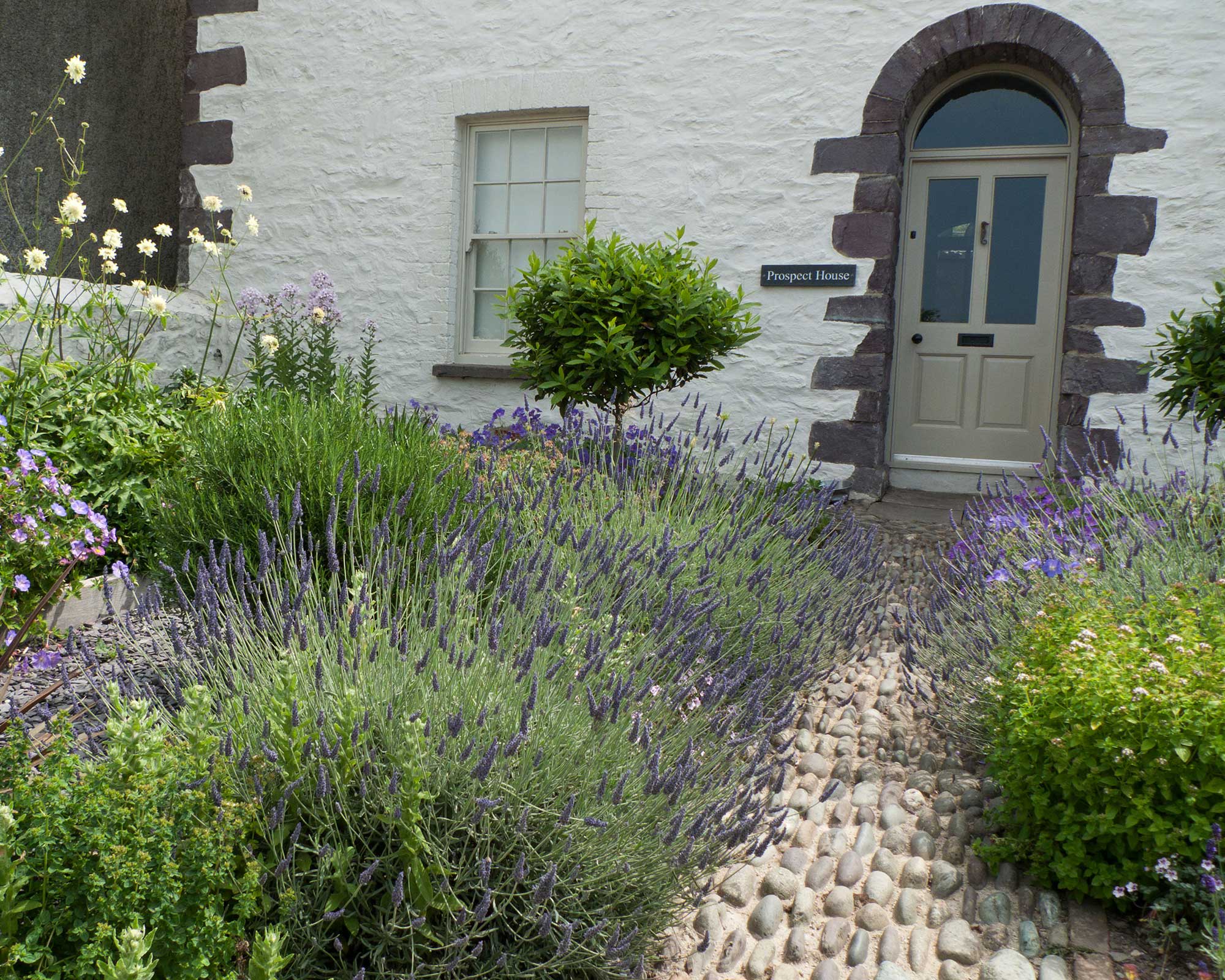
- Best for: Scent
- Height: 2ft (60cm)
- Spread: 2ft (60cm)
- Hardiness: USDA 5-8 (UK H5)
Provide a warm welcome with aromatic lavender. You may wish to pop it in a couple of pots to frame your front door, or, it makes a good hedging plant for lining a front garden path.
'For a substantial hedge, reaching 2ft (60cm), plant "Folgate" (purple) or "Arctic Snow" (white) – and for a low hedge, "Purple Treasure" and "Purity" only grow to 15in (40cm),’ recommends Simon Charlesworth, Director of Downderry lavender nursery.
Lavenders like very well-drained, poor soil in full sun and attract bees and butterflies. Our guide on how to grow lavender has more top tips.
14. Fagus sylvatica Atropurpurea Group
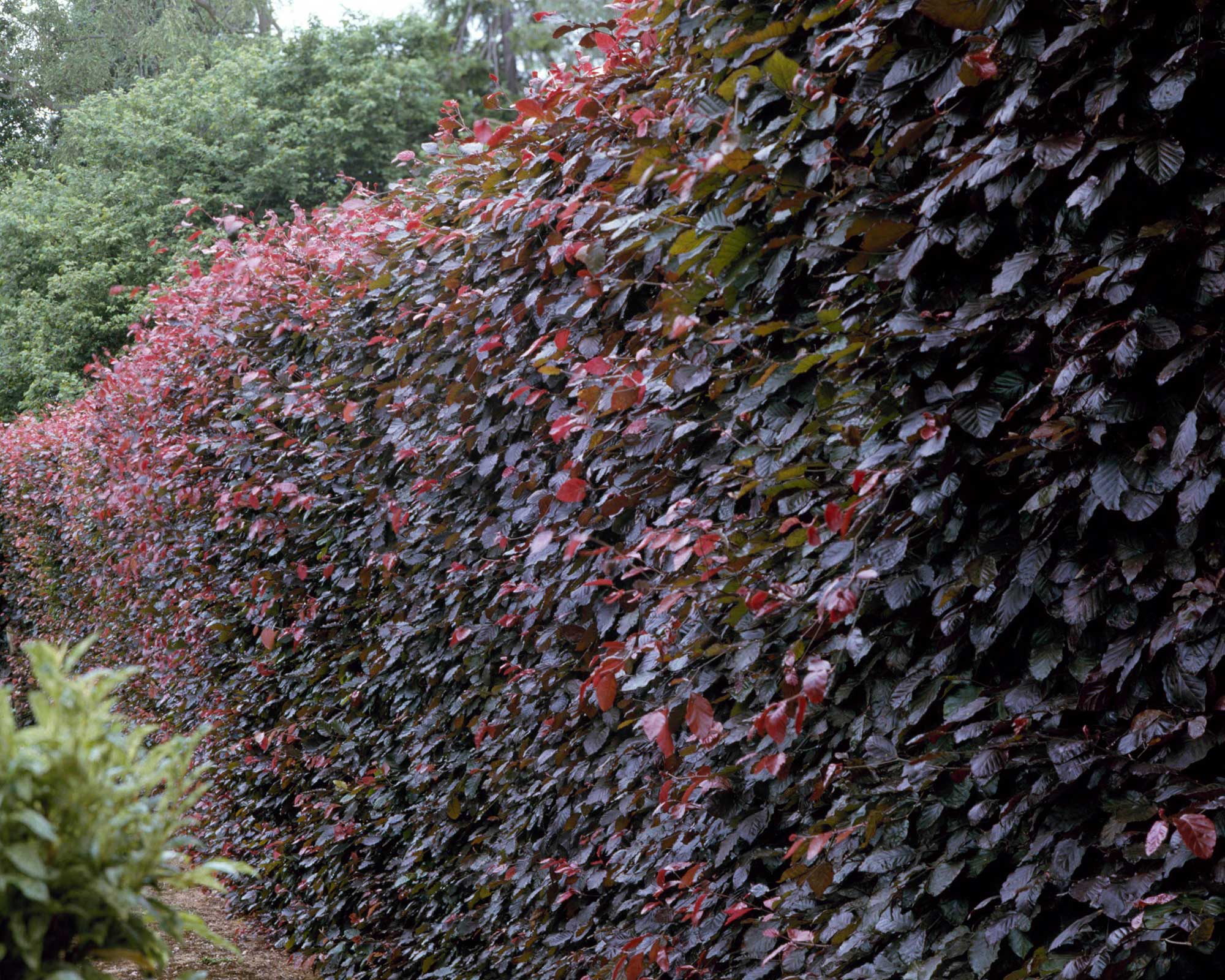
- Best for: Urban elegance
- Height: 39ft (12m)
- Spread: 26ft (8m)
- Hardiness: USDA 5-7 (UK H6)
Copper beech produces a beautiful, substantial hedge in a sizeable front garden. The deep-purple leaves fade to copper-red in fall and can remain on the plant throughout winter, unless the garden is very exposed to strong winds.
Grow this deciduous hedge in well-drained soil in sun or semi-shade. Cut in late summer, once birds have fledged.
15. Pyrus salicifolia 'Pendula'
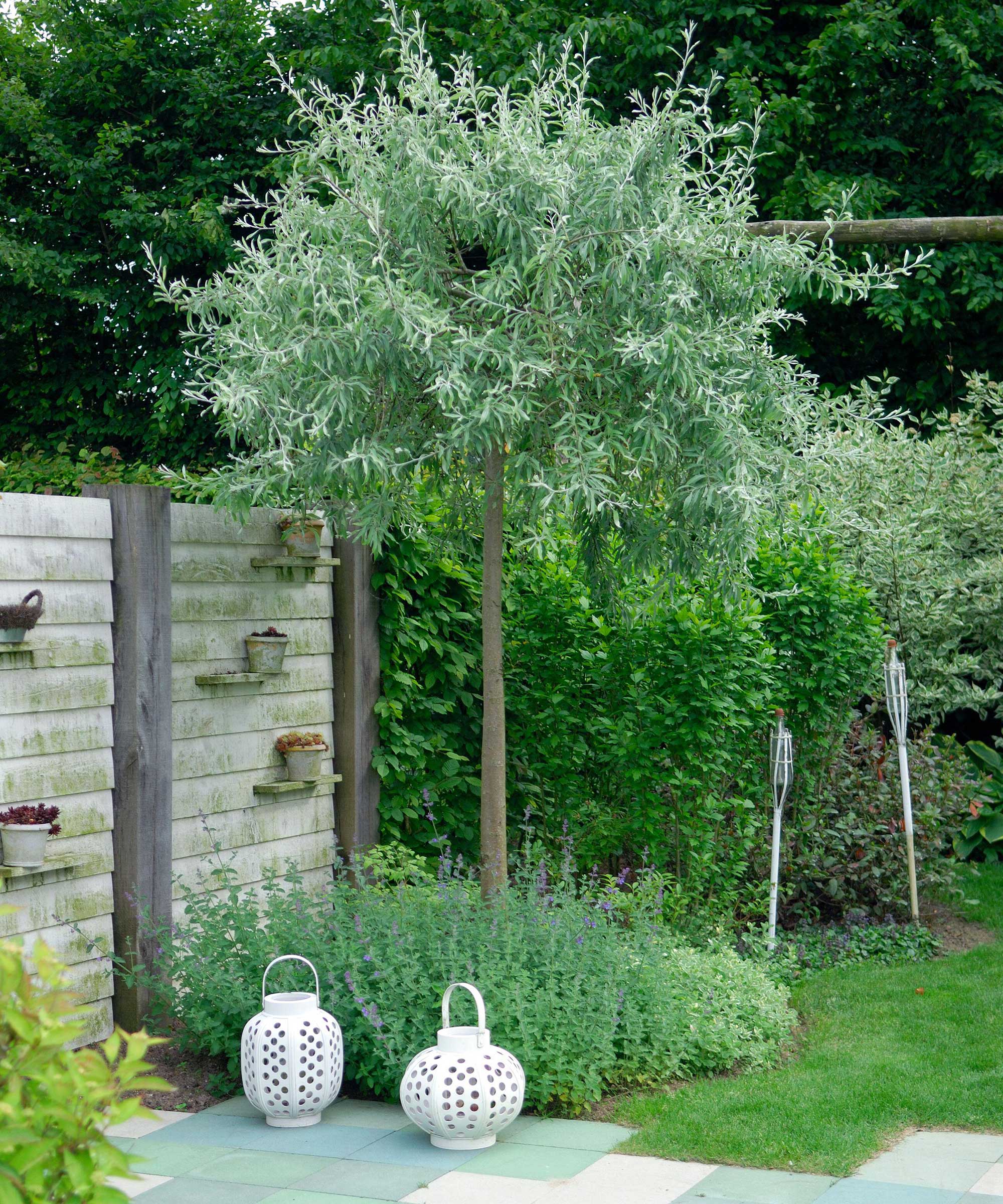
- Best for: Structure
- Height: 16ft (5m)
- Spread: 13ft (4m)
- Hardiness: USDA 4-7 (UK H6)
Another option for a front garden tree, this is a lovely ornamental pear that provides shape, charm, and color.
In spring, it is adorned with white blossom; then, for the rest of the summer, the attractive willow-like silvery-gray leaves take center stage, on spreading, weeping branches.
Grow this deciduous tree in well-drained soil in sun; it copes well with urban pollution.
16. Ilex aquifolium 'Argentea Marginata'
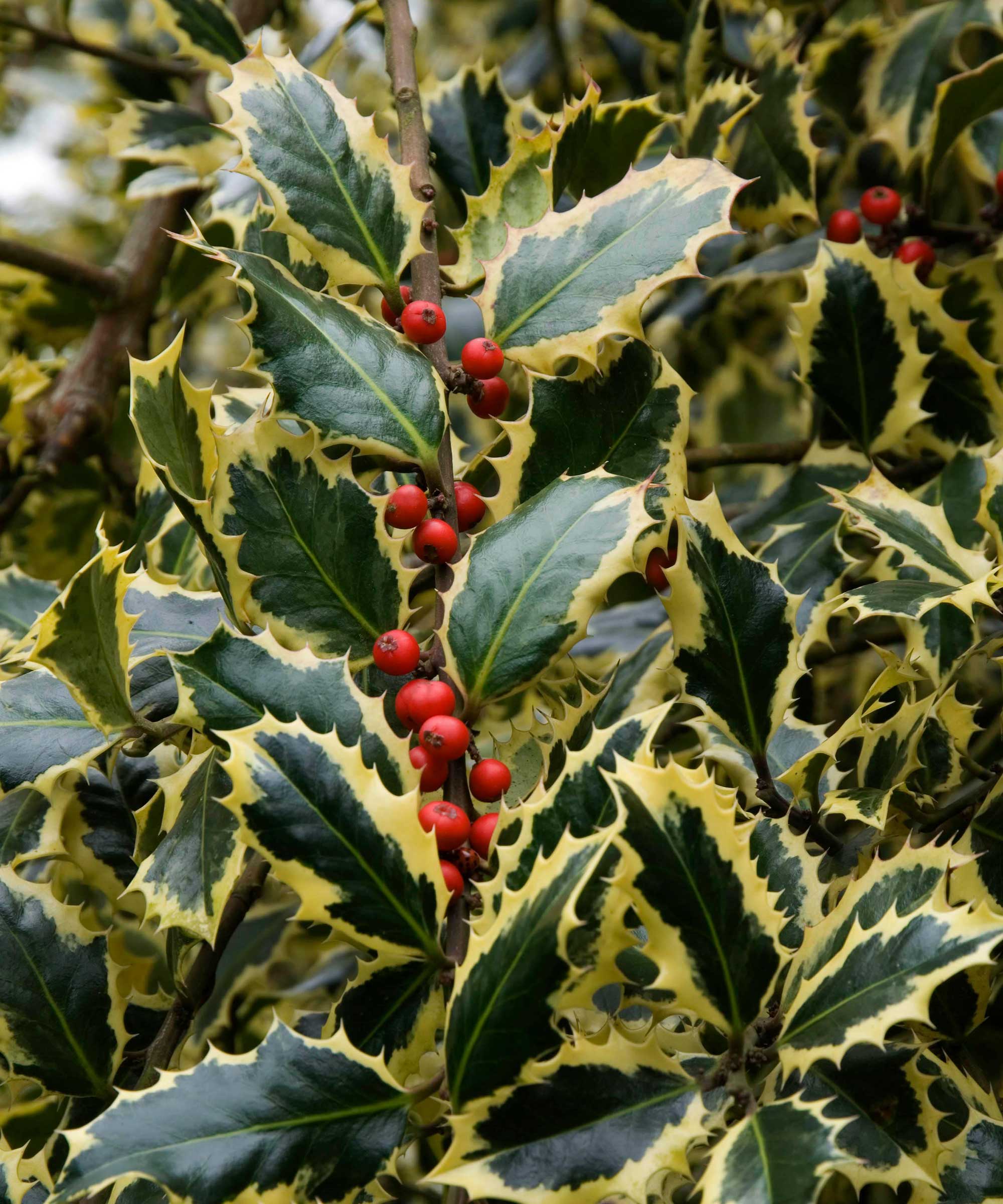
- Best for: Berries
- Height: 42ft (13m)
- Spread: 13ft (4m)
- Hardiness: USDA 7-9 (UK H6)
Hollies are useful plants for front gardens if you want year-round greenery and winter interest.
This variety is an elegant, variegated type, with cream and green leaves that are paired with red berries in fall and winter. Like all hollies, it responds well to clipping and can be sheared into a boule or cone, after its berries have finished.
It's one of the best plants for winter berries, but being female, it must be in the vicinity of a male plant in order to produce them. Grow in well-drained soil in sun.
How should you arrange your front garden plants?
One way to arrange your pick of plants for front yards is around a central feature. A tree is the obvious choice – as well as improving air quality, it helps wildlife. In a very small front garden, a single large, ornamental terracotta pot surrounded by planting can look fabulous.
Alternatively, use low hedging to contain planting beds or create a parterre or knot garden, which is a great feature for a front garden. Use Buxus sempervirens, Ilex crenata, Euonymus japonicus ‘Microphyllus’, or Lonicera ligustrina var. yunnanensis 'Maigrün'.
You could also create a tapestry of evergreens, such as rosemary and santolina, as an alternative to a dull expanse of gravel or lawn, and clip them into boules after flowering. Lavender is a great wildlife choice – plant pink, white, and blue forms to create a soothing, multi-layered effect.
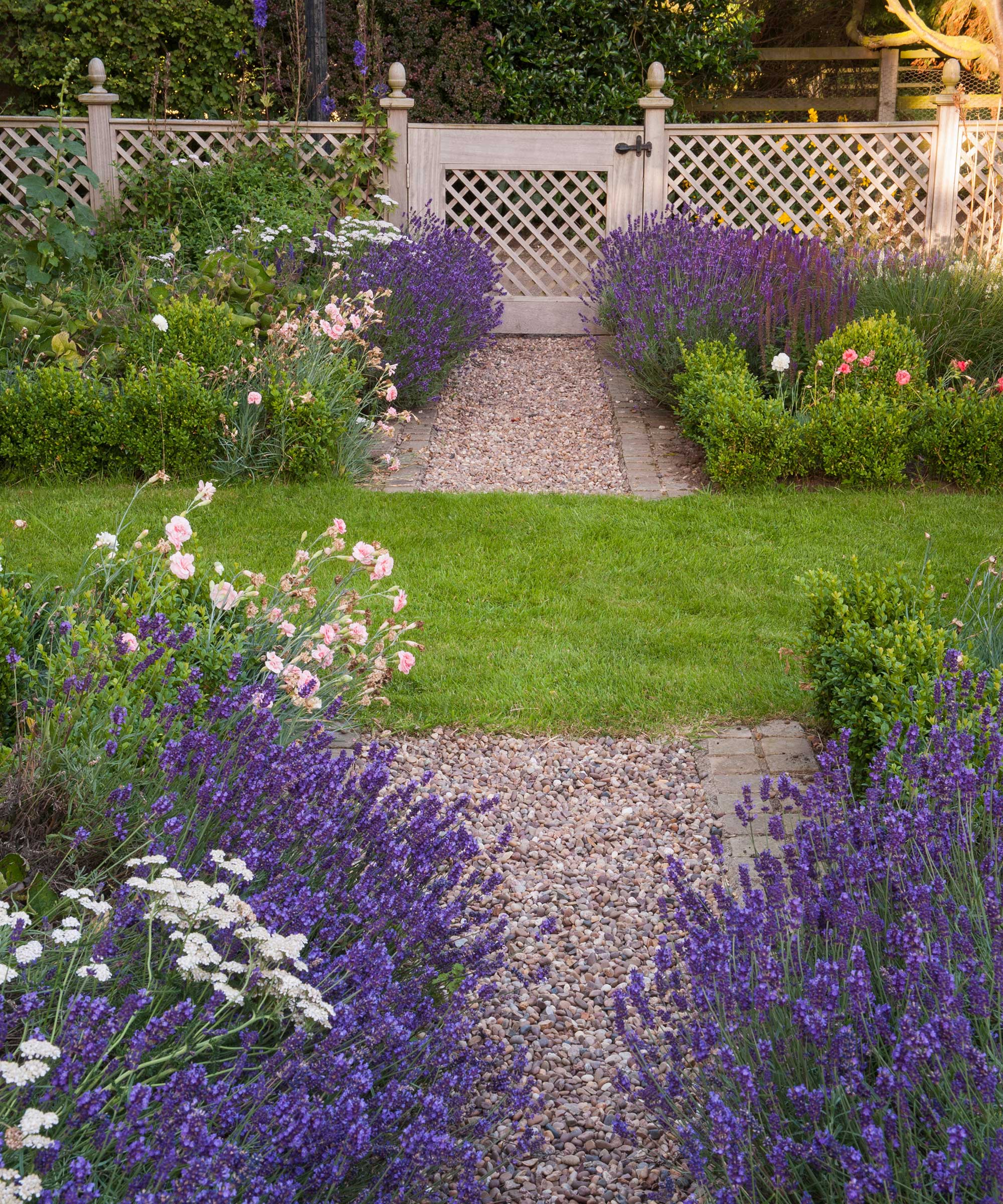
What are the best evergreens for front gardens?
Try landscaping with evergreens in your front garden and you'll have year-round foliage. Plus, they seldom need much maintenance.
Many evergreens – including Portugal and bay laurel, euonymus ‘Silver Queen’, and Phillyrea latifolia – respond well to clipping, providing verdant structure to show off the house. Trim them once a year into boules, lollipops, or cones.
Evergreens that keep a great shape with minimal or no cutting include mahonia, sarcococca, Pinus mugo, and hebe 'Pagei'.
Non-invasive evergreen bamboos Fargesia murielae or F. rufa are another superb choice and can be clipped into a hedge shape, if desired.

The garden was always a big part of Holly's life growing up, as was the surrounding New Forest where she lived. Her appreciation for the great outdoors has only grown since then. She's been an allotment keeper, a professional gardener, and a botanical illustrator – plants are her passion.
